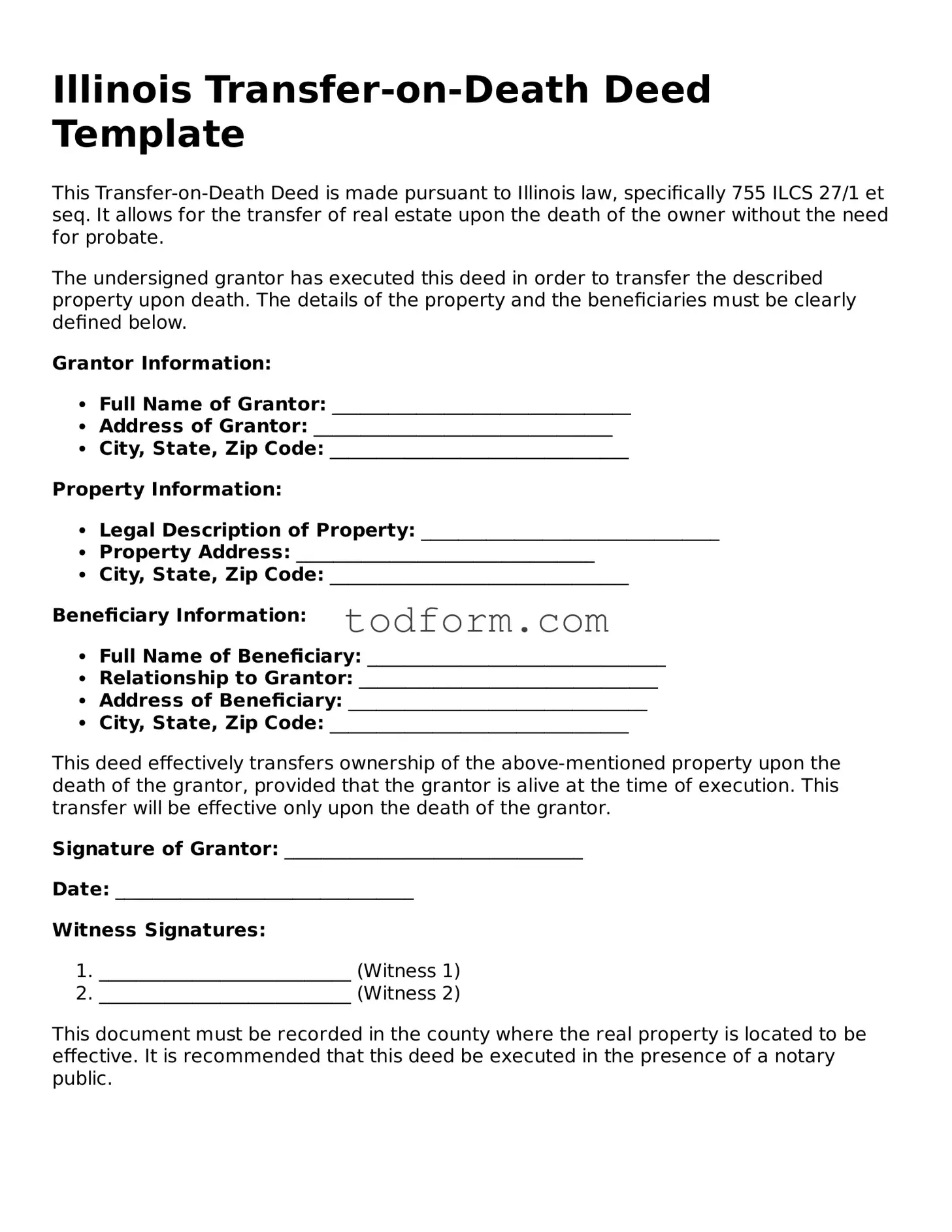The Illinois Transfer-on-Death Deed (TODD) form is similar to a Last Will and Testament in that both documents allow individuals to dictate how their property will be distributed upon their death. However, the key difference lies in the timing of the transfer. A will takes effect only after probate, which can be a lengthy process, while a TODD allows for the immediate transfer of property outside of probate, simplifying the process for beneficiaries and reducing potential delays.
Another document comparable to the TODD is a Revocable Living Trust. Like a TODD, a living trust allows for the direct transfer of assets upon death. However, a living trust can manage assets during a person’s lifetime and can include provisions for incapacity. While both documents avoid probate, a living trust typically requires more upfront work and ongoing management than a TODD.
A Beneficiary Designation form is also similar to the TODD. This form is commonly used for financial accounts, such as life insurance policies and retirement accounts. Both documents allow property to pass directly to a named beneficiary without going through probate. However, the key distinction is that beneficiary designations are limited to specific types of accounts, while a TODD can apply to real estate.
The Joint Tenancy with Right of Survivorship agreement shares similarities with the TODD in that it allows property to transfer automatically to a surviving co-owner upon death. Both methods avoid probate, ensuring a quicker transfer. However, joint tenancy requires both owners to hold the property together, which may not always be practical or desirable for individuals wishing to maintain separate ownership.
A Life Estate deed is another document that bears resemblance to the TODD. This deed allows a person to retain the right to use a property during their lifetime while designating a remainder beneficiary who will receive the property after their death. While both documents facilitate the transfer of property, a life estate deed involves more complex rights and responsibilities during the grantor's lifetime.
The Power of Attorney for Property Management provides a different approach but serves a similar purpose in managing property. While a TODD specifies who receives property after death, a Power of Attorney allows someone to manage an individual's property during their lifetime, especially in cases of incapacity. Both documents can help ensure that property is handled according to the individual’s wishes, but they operate at different times and under different circumstances.
A Transfer-on-Death Registration for Vehicles is another similar document. Like the TODD for real estate, this registration allows vehicle ownership to transfer automatically upon death. Both processes are designed to bypass probate, making transfers more efficient. However, this registration specifically applies to vehicles, whereas the TODD is limited to real property.
The Declaration of Trust also bears resemblance to the TODD. This document creates a trust that holds property for the benefit of beneficiaries, allowing for direct transfer upon death. However, unlike a TODD, a Declaration of Trust often involves more detailed management of the assets and can include stipulations for how the property is used or distributed over time.
Finally, a Quitclaim Deed can be compared to the TODD. A Quitclaim Deed allows an individual to transfer their interest in a property to another party without warranties. While both documents facilitate the transfer of property, a Quitclaim Deed is typically used during the grantor's lifetime and does not provide the same automatic transfer upon death that a TODD does.
